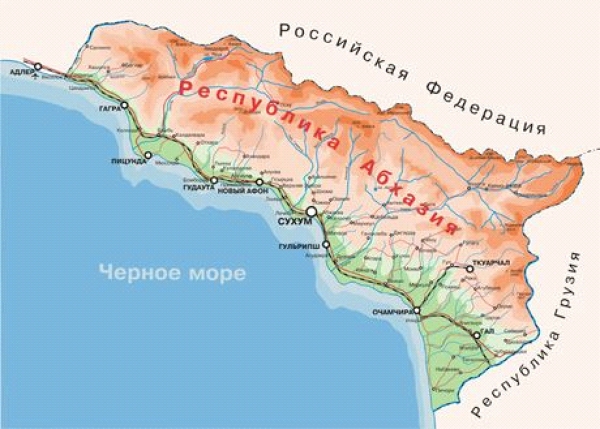Industry
The Abkhazian industry was once highly developed, and it consisted of more than 500 enterprises. Yet, after the Patriotic War of the People of Abkhazia of 1992-1993 and the subsequent blockade that lasted for seven years and was brought about by the economic sanctions of the CIS countries, the Abkhazian industry went into decline. The main infrastructure facilities were destroyed, looted or fell behind technologically, which led to a significant outflow of qualified specialists. However, despite the abovementioned circumstances, the industry of Abkhazia is being revived.
It should be noted that of great importance to the Abkhazian economy is also the export-oriented wine-making.
The grown of construction as part of the financial help of the Russian Federation that aimed, mostly, at capital construction and the restoration of social infrastructure, has had a positive effect on the volume of internal production of construction material leading to the growth in the volume of the extractive industry.
The power generation is a strategic part of the industry. It should be noted that all electricity generated in Abkhazia is being generated at the largest in the Caucasus hydroelectric station on the Ingur River. Given the water resources of Abkhazia, which consist of more than 13.5 million cubic meters of streamflow per year, the potential of hydropower, according to various estimates, exceeds 3.5 million kW. The development of hydropower of the republic is both a strategic and a promising task facing the country's leadership.
Population
According to the information of the State Statistics Office, the population of Abkhazia stands at 242 756 people as of January 1, 2014.
including:
• Urban population – 122 309 people (50.4 %)
• Rural population – 120 447 people (49.6%)
The financial sector
According to Article 140 of the Civil Code of the Republic of Abkhazia, the Russian ruble is the official currency of the Republic of Abkhazia.
Since Abkhazia is one of the states that have refused to have their own currency, the main source of accumulation of the country’s money supply is the balance of payment surplus.
The Republic of Abkhazia develops and implements a uniform state monetary policy in cooperation with the Cabinet of Ministers of the Republic of Abkhazia and the National Bank of the Republic of Abkhazia.
The main indicators of the Bank of Abkhazia, which characterize monetary relations:
• refinancing rate of the Bank of Abkhazia – 12%;
• the interest rate on refinancing loans of the Bank of Abkhazia (taking into account the margin of 6 points to the annual rate) – 18%;
• the weighted average interest rate on interbank loans provided in rubles of the Russian Federation – 22%.
The state budget
The main financial document of the Republic of Abkhazia is the State budget. The People’s Assembly — Parliament of the Republic of Abkhazia reviews, approves and monitors the execution of the State budget.
Tourism
One of the fastest growing and promising economic sectors in Abkhazia is tourism. Due to a number of competitive advantages (climate, nature, historical and architectural moments etc.), Abkhazian tourism has a solid place in the tourist markets attracting more than 1 million people to Abkhazia annually.
Educational tourism is one of the most sought after types of tourism in Abkhazia. On average, it accounts for more than 60% of the total tourist flow. Along with educational tourism, recreational tourism also develops successfully.
The majority of the tourists who come for the purpose of rest or medical treatment stay in the Gagra District, since more than 70% of the operational sanatorium and resort facilities are located in Gagra and Pitsunda.
Despite the relatively positive dynamics of the development of tourism in Abkhazia, due to a number of circumstances, the potential of the republic’s tourist sector is used only to a small degree.
One of the most essential of the abovementioned competitive advantages of Abkhazia is the ecological cleanliness of the republic
Agriculture
Abkhazia is a traditionally agrarian republic.
Among the main directions of development of modern agriculture are fishing (and crop production. Most of the agricultural products are exported to the Russian Federation and Turkey.
Transport
All main types of transport exist in the Republic of Abkhazia.
There are two airports in Abkhazia. The Sukhum airport is located in 25 km from the capital. The Bambora airport is located in 40 km from Sukhum, near Gudauta.
Yet, at present, passenger service through airports located in the territory of RA is not carried out.
Abkhazia has three seaports, including the Ochamchyra port, which was built for military purposes. The main seaport of Abkhazia is in Sukhum.





